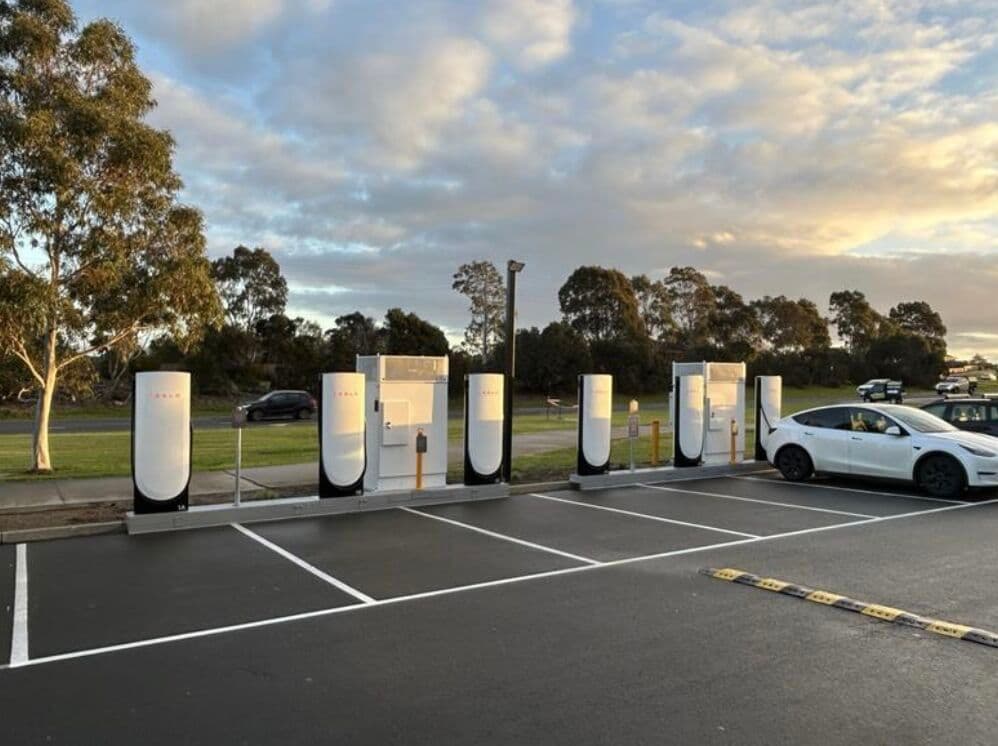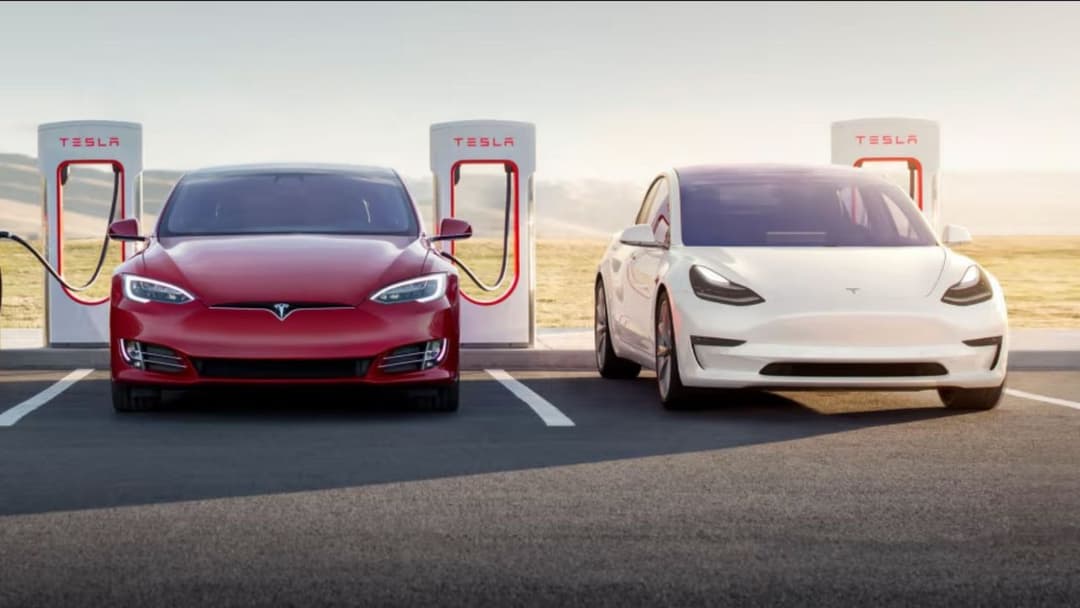Tesla Opens Supercharger Network to All EVs: What Non-Tesla Drivers Need to Know About Pricing and Access
Key Points
- 66% of Tesla's 130 Australian Supercharger locations (86 sites with 564 posts) are now open to all EV brands
- Non-Tesla drivers pay up to $0.85/kWh at peak times compared to $0.61/kWh for Tesla owners - a 39% premium
- Tesla maintains 99.5% uptime across its Australian network with repairs completed in days, not months
Tesla's Supercharger network has long been the gold standard for EV charging infrastructure in Australia, and now the majority of it is accessible to drivers of all electric vehicle brands. However, this expanded access comes with a significant price premium for non-Tesla owners, and it's not purely a goodwill gesture from the EV manufacturer.

Government Funding Drives Network Expansion
The opening of Tesla's charging network to all EVs isn't just corporate generosity - it's a condition of government funding partnerships that have enabled the company's rapid infrastructure expansion across Australia.
"The New South Wales government has semi-funded a lot of our locations and one of the stipulations is that it's not just exclusive for Tesla," Tesla Australia Company Director Thom Drew said earlier this year.
Drew acknowledged the trade-off: "That's a double-edged sword for us. It's allowing us to get into regional areas that we may not be ready to invest in from a user perspective, but it also helps all EVs."
▶️MORE: Electric Car Incentives in Australia: State by State Guide (2025)

The Numbers: How Much of Tesla's Network Is Actually Open?
According to Tesla Australia Marketing Manager Kevin Goult, the current state of network accessibility is substantial:
- 86 sites open to all EVs (66% of all locations)
- 564 charging posts available to non-Tesla vehicles (69% of total posts)
- 130 total charging locations across Australia
- 817 total charging plugs nationwide
The Price Premium: What Non-Tesla Drivers Actually Pay
While access is a win for EV adoption broadly, non-Tesla drivers face significantly higher charging costs at many Supercharger locations.
Peak pricing comparison:
- Tesla drivers: $0.61 per kWh
- Non-Tesla drivers: up to $0.85 per kWh
- Other branded charging networks: $0.72 per kWh
This means non-Tesla owners can pay up to 39% more than Tesla drivers at the same charging station - a premium that adds up quickly on longer journeys.
"It can be expensive, obviously, to invest in this and getting the right power to particularly remote locations can be hard," Drew explained. "Making sure that we're building just in time to where the demand is - is how we do it."

Why Tesla's Network Actually Works: The Reliability Advantage
The key differentiator for Tesla's charging infrastructure isn't just the number of locations - it's the reliability. The company claims a 99.5% uptime rate across its Australian network in 2024, a figure that stands in stark contrast to the frequent outages reported at other charging networks.
What makes the difference? Tesla controls the entire supply chain.
"We have a full service team that maintains it [chargers]. We obviously have our own parts supply. A lot of the parts are actually shared across the vehicles into the charging technology so we manage the whole thing with live data," Drew noted.
When issues do occur, the response time is measured in days, not months. "If a site goes down - and it's often not an entire site, it's usually a stall or two, we fix it in days, not in months," Drew emphasized.
This reliability addresses one of the most significant barriers to EV adoption in Australia. "You hear this charger in this remote town has been out for six months as there are no parts - we are the total opposite of that," said Drew.

Data-Driven Expansion: Where Tesla Builds Next
Tesla's approach to network expansion is methodical and data-informed, using actual driving patterns from its existing fleet to determine where new charging infrastructure is needed most.
"We see where our customers drive. We have all that data and that helps us influence our decisions on where to open up new stations," Drew explained.
The company has been operating in Australia since 2010, but Drew sees significant room for growth: "There is still a lot of growth to happen here."
The strategic goal is clear: eliminate range anxiety as a barrier to EV ownership. "What if I can't find a reliable charging station? That's the type of stuff that we want to overcome and give customers that certainty that it's not going to disrupt their lifestyle."

The Bottom Line for Non-Tesla EV Owners
The expansion of Tesla's Supercharger network to non-Tesla vehicles represents a significant step forward for Australia's EV charging infrastructure. With 86 locations now accessible and industry-leading reliability, it provides a valuable backup option for long-distance travel.
However, the pricing premium means non-Tesla drivers should view Superchargers as a convenience option rather than their primary charging solution. At up to $0.85/kWh during peak times, costs can add up quickly compared to home charging or other public charging alternatives.
For Tesla owners, the network remains a compelling ownership advantage - combining widespread availability, exceptional reliability, and preferential pricing that's up to 39% cheaper than what drivers of other EVs pay at the same locations.
As Australia's EV market continues to mature, the pressure will be on other charging networks to match Tesla's reliability standards while offering competitive pricing. Until then, Tesla's infrastructure investment - partially funded by taxpayers - continues to set the benchmark for what EV charging should be.
About the author
Stay up to date with the latest EV news
- Get the latest news and update
- New EV model releases
- Get money savings-deal

